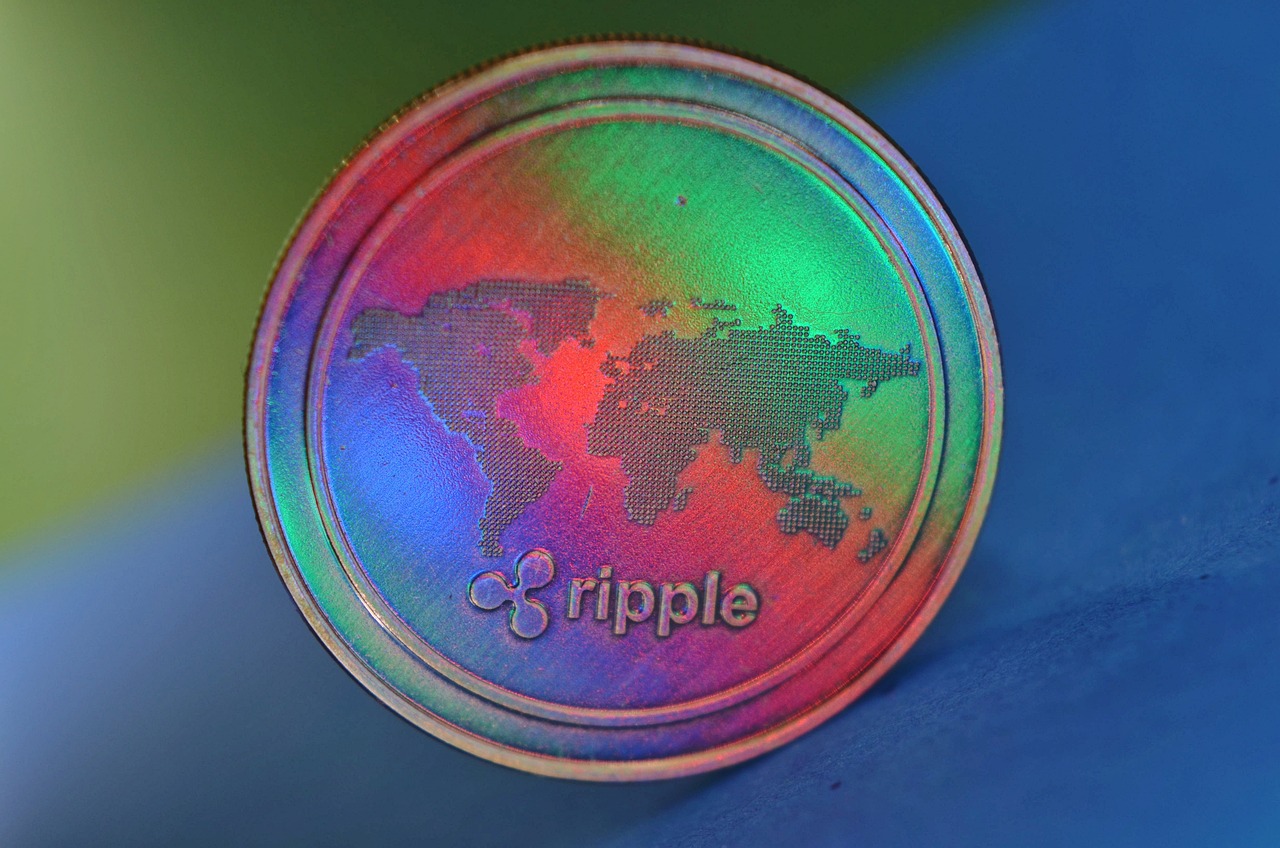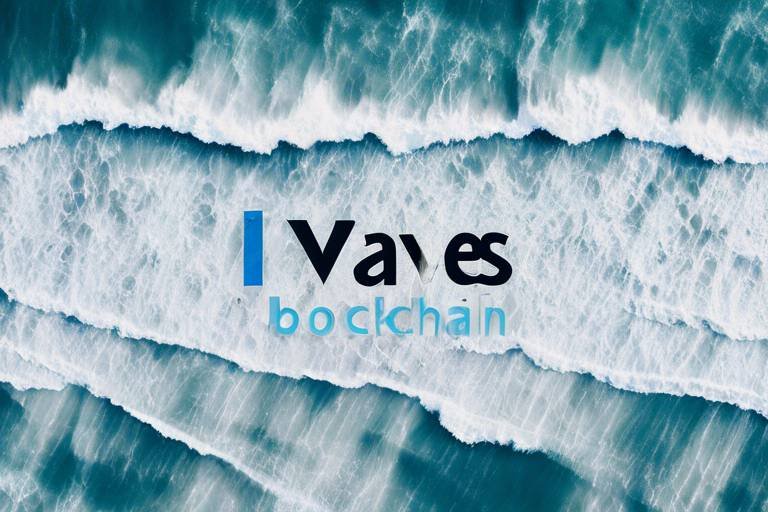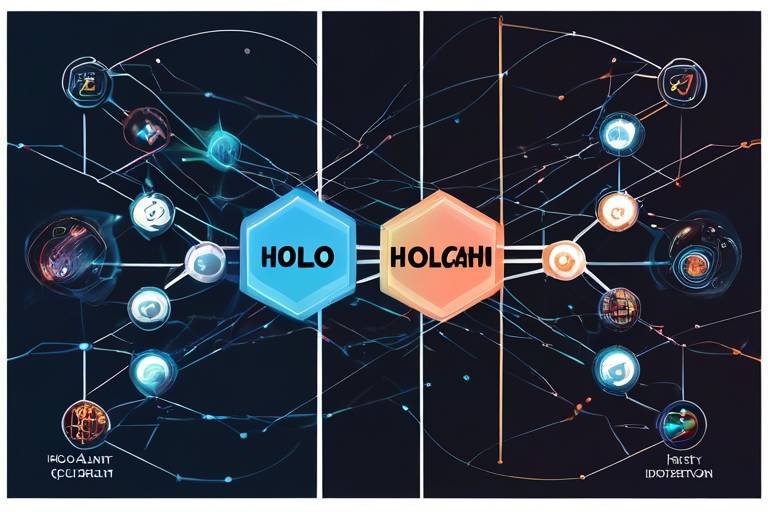Mina Protocol - The World's Lightest Blockchain
Welcome to the world of Mina Protocol, a groundbreaking innovation that is reshaping how we think about blockchain technology. Imagine a blockchain so light that it can fit in a single tweet! That's right; Mina Protocol is designed to be the world's lightest blockchain, weighing in at just 22 kilobytes. This astonishingly small size is not just a gimmick; it has profound implications for the accessibility, efficiency, and scalability of blockchain networks. In a landscape often dominated by heavyweights like Bitcoin and Ethereum, Mina stands out as a breath of fresh air, offering a solution that is not only practical but also revolutionary.
At its core, Mina Protocol leverages advanced cryptographic techniques known as zk-SNARKs (Zero-Knowledge Succinct Non-Interactive Arguments of Knowledge) to maintain its minimal size while ensuring robust security. This means that anyone can verify the state of the blockchain directly from their device without needing to download the entire history of transactions. Think of it as having a library where you can check out any book you want without having to carry the entire library with you. This unique feature makes Mina incredibly user-friendly, opening the door for greater participation and democratization of blockchain technology.
But what does this lightweight architecture mean for everyday users and developers? For users, it means faster transaction times and lower costs, making it a perfect fit for applications in decentralized finance (DeFi), identity verification, and secure data sharing. For developers, the simplicity of running a node and the efficient transaction processing create an inviting environment for building innovative applications. With Mina, the barriers to entry are significantly lowered, allowing more people to engage with blockchain technology.
As we delve deeper into this article, we will explore not only the key features of Mina Protocol, including its scalability solutions and privacy features, but also how it compares to traditional blockchains. We'll discuss its growing community support and the exciting potential that lies ahead for this lightweight titan. So, buckle up as we take a closer look at why Mina Protocol is not just a trend, but a pivotal player in the future of decentralized technologies.

What is Mina Protocol?
Mina Protocol is a revolutionary blockchain designed to be lightweight and efficient. Imagine a blockchain that fits in your pocket—well, that’s essentially what Mina offers! It utilizes a cutting-edge technology known as zk-SNARKs (Zero-Knowledge Succinct Non-Interactive Arguments of Knowledge) to ensure that the blockchain remains incredibly small, allowing anyone to verify the network directly from their device with ease. This means that you don’t need a supercomputer or a massive server farm to participate in the network; a simple smartphone can do the trick!
The core idea behind Mina Protocol is to democratize access to blockchain technology. Traditional blockchains like Bitcoin and Ethereum have grown so large that they require significant resources to maintain. In contrast, Mina's architecture maintains a constant size of just 22 kilobytes. This is a game-changer, as it allows quick synchronization and significantly reduces the resources needed to run a full node. You might be wondering, "How can a blockchain be so small?" Well, the secret lies in its innovative use of zk-SNARKs, which allows for the verification of transactions without needing to store all the data on-chain.
With Mina, users can enjoy a seamless experience, whether they are developers looking to build decentralized applications (dApps) or everyday users wanting to send and receive cryptocurrency. The lightweight nature of Mina Protocol not only enhances accessibility but also fosters a more inclusive environment for blockchain enthusiasts. After all, who wouldn’t want to be part of a network that prioritizes efficiency and user-friendliness?
In summary, Mina Protocol is not just another blockchain; it’s a paradigm shift in how we think about blockchain technology. By prioritizing efficiency and accessibility, Mina is paving the way for a more decentralized future. Whether you’re a seasoned developer or a curious newcomer, Mina Protocol offers a fascinating glimpse into the future of blockchain.

Key Features of Mina Protocol
Mina Protocol is not just another blockchain; it’s a game-changer in the world of decentralized technologies. One of its most striking features is its minimal blockchain size. While traditional blockchains can grow to several gigabytes, Mina maintains a constant size of just 22 kilobytes. This remarkable feat is made possible through the use of zk-SNARKs (Zero-Knowledge Succinct Non-Interactive Arguments of Knowledge), which allows the blockchain to remain small while still providing robust security and verification. Imagine being able to run a full node on your smartphone or even a low-powered device—this is the reality that Mina Protocol offers.
Another key feature is its efficient transaction processing. With Mina, transactions are processed quickly, enabling users to send and receive assets without the long wait times often associated with larger blockchain networks. This efficiency is crucial for applications that require real-time interactions, such as financial services and gaming. The ability to handle transactions swiftly while keeping the blockchain size static is a significant advantage that sets Mina apart from its competitors.
Moreover, the strong privacy measures embedded in Mina Protocol cannot be overlooked. By utilizing advanced cryptographic techniques, Mina ensures that transactions can be verified without disclosing sensitive information. This makes it an attractive option for applications that prioritize user confidentiality, such as identity verification and secure data sharing. Users can engage in transactions knowing their personal information remains protected, which is increasingly important in today’s digital landscape.
In summary, the key features of Mina Protocol—its lightweight architecture, efficient transaction processing, and privacy features—combine to create a powerful and flexible platform. As the blockchain ecosystem continues to evolve, these characteristics position Mina as a leading choice for developers and users seeking a modern, efficient, and secure blockchain solution.
| Feature | Description |
|---|---|
| Minimal Blockchain Size | Constant size of 22 KB, enabling easy verification and low resource requirements. |
| Efficient Transaction Processing | Fast transactions that cater to real-time applications. |
| Strong Privacy Measures | Advanced cryptographic techniques to protect user information during transactions. |

Lightweight Architecture
Mina Protocol's is one of its most remarkable features, setting it apart from traditional blockchains. Imagine a world where you can carry an entire blockchain in your pocket! With Mina, that’s not just a dream; it’s a reality. The entire blockchain is designed to maintain a constant size of just 22 kilobytes. This is revolutionary because it allows anyone with a smartphone or a basic computer to verify the entire network easily, without needing to download massive amounts of data.
How does this work? Well, the secret lies in the use of zk-SNARKs, a form of cryptographic proof. Instead of storing every transaction on the blockchain, Mina uses these proofs to ensure that the state of the blockchain can be verified without needing to access all previous transactions. This means that the network can achieve high levels of scalability and efficiency without the burden of a large blockchain size. In essence, it's like having a library where you can access any book in an instant without having to carry the entire collection around!
This architecture not only enhances accessibility but also encourages more people to participate in the network. With lower hardware requirements, anyone can run a full node, contributing to the network's security and decentralization. The implications are profound: more nodes equal more security, and more participants mean a stronger community. It's a win-win situation!
Additionally, the lightweight nature of Mina's architecture allows for quick synchronization. Users can join the network and start transacting almost immediately without waiting for lengthy downloads or updates. This is particularly beneficial for users in regions with limited internet access, as they can still engage with the blockchain without a heavy data burden.
In summary, Mina Protocol's lightweight architecture is not just about being small; it's about being smart. By leveraging advanced cryptographic techniques and maintaining a compact size, it opens the door for a broader audience to engage with blockchain technology. This innovation paves the way for a more inclusive and accessible digital economy.

Scalability Solutions
Mina Protocol introduces a groundbreaking approach to scalability that sets it apart from traditional blockchains. Unlike conventional networks that often struggle with congestion as transaction volumes increase, Mina employs a unique mechanism utilizing recursive zk-SNARKs. This innovative technology allows the blockchain to maintain a constant size, which is crucial for ensuring that the network remains efficient and accessible, even as it grows.
To put it simply, think of Mina as a small, efficient car that can carry a growing number of passengers without needing to expand in size. This is achieved through the clever use of cryptographic proofs that compress the data needed for transaction verification. As a result, even with millions of transactions, the overall blockchain remains lightweight at just 22 kilobytes. This is a game-changer for scalability, as it allows anyone with a smartphone or a basic computer to participate in the network without requiring extensive resources.
Moreover, the recursive nature of zk-SNARKs means that each new transaction can be verified without the need to download the entire history of the blockchain. This not only speeds up transaction times but also significantly reduces the energy consumption associated with processing transactions. In comparison to traditional blockchains, where scaling often leads to longer wait times and increased fees, Mina's approach allows for rapid confirmations and low-cost transactions.
The implications of this scalability solution are vast. For developers, it means they can build applications that can handle a high volume of users without worrying about performance bottlenecks. For users, it translates to a seamless experience where transactions can be processed quickly and efficiently, regardless of network congestion. This positions Mina Protocol as a viable option for various applications, from decentralized finance (DeFi) to identity verification and beyond.
In summary, Mina Protocol's scalability solutions not only enhance its performance but also pave the way for a more inclusive and user-friendly blockchain experience. By leveraging advanced cryptographic techniques, it ensures that the network can grow sustainably while maintaining its lightweight nature. This is a significant step forward in the quest for a truly scalable and efficient blockchain ecosystem.

Privacy Features
Mina Protocol takes user privacy seriously, incorporating advanced cryptographic techniques that set it apart in the blockchain realm. In a world where data breaches and privacy concerns are rampant, Mina's approach to safeguarding user information is not just commendable; it’s revolutionary. By leveraging zk-SNARKs (Zero-Knowledge Succinct Non-Interactive Arguments of Knowledge), Mina allows users to verify transactions without exposing any sensitive details. This means that you can prove something is true without revealing the underlying data, akin to showing someone your driver's license to prove you’re of legal age without disclosing your birth date or address.
One of the standout aspects of Mina's privacy features is its ability to maintain a lightweight blockchain while ensuring robust security. Traditional blockchains often require extensive data storage and processing power, which can compromise user privacy. However, Mina’s 22 kilobyte size ensures that anyone can operate a full node without needing vast resources, thus promoting decentralization. This lightweight architecture not only enhances accessibility but also contributes to a more private network where users can interact without the fear of being surveilled.
Additionally, Mina Protocol enables users to engage in confidential transactions. This feature is particularly useful in scenarios where privacy is paramount, such as in financial services or personal identity verification. Users can transact knowing that their financial activities remain confidential, yet verifiable. Imagine entering a café and paying for your coffee without revealing your bank account balance or transaction history; that’s the level of privacy Mina aims to offer.
Furthermore, the integration of privacy features in Mina also means that developers can build applications that respect user confidentiality. Whether it’s for decentralized finance (DeFi) platforms or secure data-sharing services, the ability to keep user data private while still allowing for transparency in transactions opens up a plethora of opportunities. The flexibility of Mina’s architecture allows developers to innovate without compromising on the fundamental principle of user privacy.
In summary, Mina Protocol’s privacy features not only safeguard user information but also enhance the overall user experience. By ensuring that transactions can be verified without revealing sensitive data, Mina is paving the way for a more secure and private blockchain ecosystem. As we continue to navigate the digital age, where privacy is increasingly under threat, Mina’s innovative approach stands out as a beacon of hope for those who value their personal information.
- What are zk-SNARKs? zk-SNARKs are cryptographic proofs that allow one party to prove to another that a statement is true without revealing any additional information.
- How does Mina maintain its small blockchain size? Mina maintains its small size through the use of zk-SNARKs, which compress the blockchain data while allowing for verification.
- Can developers create applications on Mina Protocol? Yes, developers can build a wide variety of applications on Mina, taking advantage of its privacy features and lightweight architecture.
- Why is user privacy important in blockchain? User privacy is crucial in blockchain to protect sensitive information, maintain trust, and encourage wider adoption of the technology.

Applications of Mina Protocol
Mina Protocol's lightweight architecture and innovative technology open up a plethora of exciting applications across various domains. Its ability to maintain a constant blockchain size while ensuring efficient transaction processing makes it a game-changer in the world of decentralized applications (dApps). One of the most significant areas where Mina shines is in Decentralized Finance (DeFi). With DeFi gaining traction, the need for a blockchain that can handle numerous transactions without the burden of scalability issues is paramount. Mina's unique architecture allows users to engage in financial transactions seamlessly, all while keeping their data secure and private.
Another promising application is in the realm of identity verification. In today’s digital age, ensuring that identities are verified without compromising privacy is crucial. Mina Protocol allows users to prove their identity without sharing sensitive information, thereby reducing the risk of identity theft and fraud. This feature makes it particularly appealing for businesses and organizations that require secure identity solutions.
Moreover, Mina Protocol can facilitate secure data sharing. Imagine a world where sensitive data can be shared between parties without exposing the actual data itself. This is not just a dream; it’s a reality with Mina. By leveraging its advanced cryptographic techniques, users can share data confidently, knowing that their privacy is protected. This can be especially beneficial in sectors such as healthcare, where patient confidentiality is of utmost importance.
Here’s a quick overview of some of the key applications of Mina Protocol:
- Decentralized Finance (DeFi): Enabling seamless financial transactions.
- Identity Verification: Securely proving identities without revealing personal information.
- Secure Data Sharing: Sharing sensitive data while maintaining privacy.
- Supply Chain Management: Tracking and verifying the authenticity of goods efficiently.
- Voting Systems: Ensuring secure and anonymous voting processes.
As we look to the future, the applications of Mina Protocol are bound to expand even further. Its adaptability makes it an attractive option for developers across various sectors, from finance to healthcare and beyond. The potential for innovation is enormous, and as more developers recognize the benefits of a lightweight blockchain, we can expect to see a surge in dApps built on the Mina Protocol. This not only enhances the utility of the protocol but also contributes to the overall growth and resilience of the blockchain ecosystem.
Q: What makes Mina Protocol different from other blockchains?
A: Mina Protocol is unique due to its constant blockchain size of just 22 kilobytes, which allows for quick synchronization and minimal resource requirements.
Q: How does Mina ensure user privacy?
A: Mina utilizes advanced cryptographic techniques, such as zk-SNARKs, that allow transactions to be verified without revealing sensitive information.
Q: Can Mina Protocol be used for real-world applications?
A: Absolutely! Mina's lightweight nature makes it suitable for various applications, including DeFi, identity verification, and secure data sharing.
Q: What is the future of Mina Protocol?
A: As the blockchain landscape evolves, Mina Protocol is positioned for growth with potential developments and partnerships that will further enhance its capabilities.

Comparing Mina with Other Blockchains
When it comes to blockchain technology, not all platforms are created equal. Mina Protocol, with its innovative lightweight architecture, offers unique advantages that set it apart from traditional blockchains like Bitcoin and Ethereum. To truly appreciate what makes Mina special, let's dive into a comparison that highlights its strengths.
First off, let’s talk about **blockchain size**. While Bitcoin and Ethereum have grown to massive sizes, making it cumbersome for average users to run full nodes, Mina Protocol maintains a constant size of just 22 kilobytes. This minimal size is a game-changer. Imagine trying to fit a giant encyclopedia into your pocket—it's simply impractical! Mina, on the other hand, is like having a slim pamphlet that contains all the essential information you need.
Next, we should look at **transaction speed** and **cost**. Mina’s architecture allows for rapid transaction processing, which means users can send and receive funds almost instantly. In contrast, Bitcoin often faces congestion issues, leading to higher transaction fees during peak times. With Mina, users can enjoy lower fees and quicker transactions, making it a more attractive option for everyday use. For instance, while a Bitcoin transaction might take several minutes and cost upwards of a few dollars, a Mina transaction can be completed in seconds for a fraction of a cent.
Another area where Mina shines is in **energy consumption**. Traditional blockchains, particularly those using proof-of-work (like Bitcoin), require significant energy resources to maintain their networks. This not only raises costs but also has environmental implications. Mina Protocol, by leveraging zk-SNARKs, operates in a way that drastically reduces energy usage. This makes Mina not just a more efficient blockchain, but also a more sustainable option for the future.
| Feature | Mina Protocol | Bitcoin | Ethereum |
|---|---|---|---|
| Blockchain Size | 22 KB | Over 400 GB | Over 1 TB |
| Transaction Speed | Seconds | 10+ minutes | 30 seconds to several minutes |
| Average Transaction Cost | Fraction of a cent | Several dollars | Varies, often over a dollar |
| Energy Consumption | Low | High | Moderate |
In addition to these features, **privacy** is another critical aspect where Mina Protocol distinguishes itself. With advanced cryptographic techniques, Mina allows for transactions to be verified without disclosing sensitive information. This is a stark contrast to Bitcoin and Ethereum, where transaction details are publicly visible on the blockchain. For users who value their privacy, Mina offers a compelling solution.
Lastly, let's not overlook the role of **community support**. The Mina Protocol community is vibrant and rapidly expanding, with developers and users actively contributing to its ecosystem. This grassroots support is essential for driving innovation and adoption, ensuring that Mina Protocol remains at the forefront of blockchain technology. In comparison, while Bitcoin and Ethereum have large communities, they often face challenges in governance and scalability due to their size and complexity.
In summary, when comparing Mina Protocol with other blockchains, it’s clear that its lightweight design, efficient processing, and strong privacy measures make it a standout option. Whether you’re a developer looking for a flexible platform or a user seeking quick and cost-effective transactions, Mina offers a refreshing alternative in the crowded blockchain landscape.
- What makes Mina Protocol unique? Mina Protocol is unique due to its lightweight blockchain, which remains at just 22 KB, allowing for quick transactions and easy node operation.
- How does Mina ensure privacy? Mina uses zk-SNARKs, which allows transactions to be verified without revealing sensitive information.
- Is Mina Protocol suitable for decentralized finance (DeFi)? Yes, Mina's architecture and low transaction costs make it an attractive option for DeFi applications.
- How does Mina compare to Bitcoin and Ethereum in terms of energy consumption? Mina consumes significantly less energy than Bitcoin and Ethereum, making it a more sustainable choice.

Performance Metrics
Mina Protocol's performance metrics are nothing short of impressive, especially when you consider the challenges faced by traditional blockchain networks. With its unique architecture, Mina achieves faster transaction times while maintaining a remarkably small blockchain size of just 22 kilobytes. This means that users can seamlessly interact with the network without the burden of lengthy wait times or excessive resource consumption.
One of the standout features of Mina is its ability to process transactions efficiently. While conventional blockchains like Bitcoin and Ethereum can experience significant slowdowns during peak usage times, Mina's use of zk-SNARKs allows it to maintain a consistent performance level. This technology ensures that even as the number of transactions increases, the network remains responsive and user-friendly.
To give you a clearer picture, let’s compare Mina's performance metrics with those of traditional blockchains:
| Metric | Mina Protocol | Bitcoin | Ethereum |
|---|---|---|---|
| Blockchain Size | 22 KB | ~400 GB | ~100 GB |
| Transaction Speed | Instant | 10 minutes | 15 seconds (average) |
| Energy Consumption | Low | High | Moderate |
This table illustrates how Mina Protocol stands out in terms of efficiency and sustainability. The small blockchain size not only facilitates quicker synchronization but also allows users to run full nodes on low-powered devices, making it accessible to a broader audience. Imagine being able to verify transactions from your smartphone without draining your battery! This accessibility is a game-changer in the blockchain space, especially for users in regions with limited technological infrastructure.
Moreover, the energy consumption of Mina is significantly lower than that of its counterparts. In an era where environmental concerns are paramount, Mina's eco-friendly approach positions it as a responsible choice for developers and users alike. By minimizing energy usage, Mina Protocol not only enhances its appeal but also contributes to a more sustainable future for blockchain technology.
In summary, the performance metrics of Mina Protocol highlight its potential as a leading player in the blockchain ecosystem. With faster transaction speeds, lower energy consumption, and an incredibly small blockchain size, it offers a compelling alternative to traditional blockchain platforms. As more developers and users recognize these advantages, we can expect Mina to gain traction and drive innovation in the decentralized space.
- What makes Mina Protocol different from other blockchains?
Mina Protocol's unique architecture allows it to maintain a constant blockchain size of just 22 kilobytes, which significantly enhances accessibility and efficiency compared to traditional blockchains. - How does Mina ensure user privacy?
Mina utilizes advanced cryptographic techniques, specifically zk-SNARKs, which allow transactions to be verified without revealing sensitive information. - What applications can Mina Protocol be used for?
Mina's lightweight nature makes it suitable for various applications, including decentralized finance (DeFi), identity verification, and secure data sharing. - Is Mina Protocol energy-efficient?
Yes, Mina Protocol is designed to be energy-efficient, making it a more sustainable choice compared to many traditional blockchain networks.

Adoption and Community Support
The success of any blockchain protocol is often intertwined with its community and adoption rates. In the case of Mina Protocol, the community has rapidly grown, reflecting a robust interest in its innovative approach to blockchain technology. As users and developers flock to this lightweight platform, they are not just passive participants; they are active contributors to its ecosystem. This engagement fosters a sense of ownership and collaboration, making the network stronger and more resilient.
One of the standout aspects of Mina's community is its diversity. It comprises developers, enthusiasts, and users from various backgrounds, all united by a common goal: to leverage the advantages of a lightweight blockchain. As a result, the community is buzzing with ideas, projects, and initiatives aimed at pushing the boundaries of what Mina can achieve. This collaborative spirit is vital for innovation, as it allows for the sharing of knowledge and resources, leading to faster development cycles and more robust applications.
Moreover, the community support for Mina Protocol extends beyond mere participation. Various forums, social media channels, and online platforms have emerged, where members exchange insights, troubleshoot issues, and showcase their projects. This dynamic interaction not only helps newcomers feel welcomed but also accelerates the learning curve for those looking to dive into blockchain development. The availability of resources, such as tutorials, documentation, and community-driven events, further enhances the accessibility of Mina for developers at all levels.
In addition to community engagement, partnerships play a crucial role in the adoption of Mina Protocol. Collaborations with other blockchain projects, businesses, and educational institutions can significantly expand the reach and utility of the network. By integrating Mina Protocol into existing systems or creating new applications on its platform, these partnerships help demonstrate the practical benefits of using a lightweight blockchain. The potential for cross-industry applications is immense, and as more entities recognize the advantages of Mina, adoption is likely to surge.
To summarize, the for Mina Protocol are not just buzzwords; they represent the lifeblood of the project. The vibrant community, coupled with strategic partnerships, creates a fertile ground for innovation and growth. As more users and developers embrace Mina, the possibilities for this lightweight blockchain become increasingly exciting.
- What is Mina Protocol? Mina Protocol is a lightweight blockchain designed to maintain a constant size of just 22 kilobytes, making it easy for anyone to verify the network from their device.
- How does Mina Protocol ensure privacy? Mina utilizes advanced cryptographic techniques, such as zk-SNARKs, to verify transactions without revealing sensitive information.
- What are the main applications of Mina Protocol? Mina's lightweight nature allows for various applications, including decentralized finance (DeFi), identity verification, and secure data sharing.
- How does Mina compare to other blockchains? Mina stands out due to its minimal size and efficient processing, offering faster transaction times and lower energy consumption compared to traditional blockchains like Bitcoin and Ethereum.
- Is there a growing community around Mina Protocol? Yes, the Mina community is rapidly expanding, with active participation from developers and users contributing to its ecosystem.

The Future of Mina Protocol
Mina Protocol is not just a fleeting trend in the blockchain world; it's a cornerstone for the future of decentralized technologies. As we look ahead, we can see a landscape rich with possibilities, where Mina's unique features could redefine how we interact with blockchain systems. Imagine a world where transactions are instantaneous and data privacy is paramount. This is the vision that Mina Protocol is paving the way for.
One of the most exciting prospects for Mina is its potential for partnerships with various industries. As businesses increasingly seek efficient and scalable blockchain solutions, Mina's lightweight architecture positions it as a prime candidate. For instance, sectors like finance, healthcare, and supply chain management could greatly benefit from Mina's capabilities. The ability to verify transactions without compromising user privacy makes it an attractive option for organizations that handle sensitive data.
Moreover, as decentralized finance (DeFi) continues to grow, Mina's role in this ecosystem will likely expand. With its efficient transaction processing and minimal blockchain size, developers can create innovative DeFi applications that are accessible to a broader audience. This could lead to a surge in user adoption, as more people become aware of the benefits that Mina offers.
In addition to partnerships and applications, community support plays a critical role in Mina's future. The growing community of developers and users is essential for driving innovation and enhancing the protocol's capabilities. As more individuals contribute their expertise and ideas, we can expect to see exciting developments that could further enhance Mina's functionality. The collaborative nature of blockchain technology means that the community will be instrumental in shaping the future of Mina Protocol.
Furthermore, as the demand for sustainable blockchain solutions increases, Mina's low energy consumption will become a significant advantage. In a world where environmental concerns are at the forefront, Mina Protocol offers a solution that aligns with the growing need for eco-friendly technologies. This aspect alone could attract more users and developers who are conscious of their carbon footprint.
As we venture into the future, we can anticipate that Mina Protocol will continue to evolve, embracing new technologies and adapting to the ever-changing landscape of blockchain. Its commitment to maintaining a lightweight and efficient network will ensure that it remains relevant, even as other blockchains struggle with scalability and performance issues.
In summary, the future of Mina Protocol is bright and full of potential. With its innovative approach to blockchain technology, strong community support, and focus on privacy and efficiency, Mina is set to make a significant impact in the decentralized world. The journey has just begun, and we can’t wait to see where it leads!
- What makes Mina Protocol unique? Mina Protocol is unique due to its extremely lightweight blockchain, which remains at just 22 kilobytes, allowing for easy verification and accessibility.
- How does Mina ensure user privacy? Mina utilizes advanced cryptographic techniques, such as zk-SNARKs, to verify transactions without revealing sensitive information, ensuring user privacy.
- What applications can Mina Protocol be used for? Mina can be used for various applications, including decentralized finance (DeFi), identity verification, and secure data sharing.
- How does Mina Protocol compare to Bitcoin and Ethereum? Unlike Bitcoin and Ethereum, which have large and growing blockchain sizes, Mina maintains a constant size, enabling faster transaction times and lower energy consumption.
- What is the future outlook for Mina Protocol? The future of Mina Protocol looks promising with potential partnerships, community growth, and its ability to adapt to the evolving blockchain landscape.
Frequently Asked Questions
- What makes Mina Protocol different from other blockchains?
Mina Protocol stands out due to its incredibly lightweight design, maintaining a constant size of just 22 kilobytes. This allows users to verify the entire blockchain from their devices without needing extensive resources, which is a significant departure from traditional blockchains that can be several gigabytes in size.
- How does Mina achieve scalability?
Mina Protocol utilizes recursive zk-SNARKs, a cutting-edge cryptographic technology, to ensure scalability. This means that as more transactions occur on the network, the blockchain size remains static, allowing for efficient processing without compromising performance.
- Is user privacy guaranteed on Mina Protocol?
Absolutely! Mina Protocol incorporates advanced cryptographic techniques that allow transactions to be verified without revealing sensitive user information. This makes it an excellent choice for applications where privacy and confidentiality are paramount.
- What are some potential applications of Mina Protocol?
Mina Protocol's lightweight nature opens up a myriad of applications, including decentralized finance (DeFi), identity verification, and secure data sharing. Its flexibility makes it appealing for developers looking to create innovative solutions across various sectors.
- How does Mina Protocol compare in terms of performance?
Mina Protocol excels in performance metrics, boasting faster transaction times and lower energy consumption compared to heavier blockchain networks like Bitcoin and Ethereum. This efficiency makes it a practical option for everyday use and encourages broader adoption.
- What role does community support play in Mina Protocol?
The Mina Protocol community is vital for its growth and innovation. A rapidly growing network of developers and users actively contributes to the ecosystem, driving adoption and fostering new ideas that enhance the platform's capabilities.
- What does the future hold for Mina Protocol?
As the blockchain landscape continues to evolve, Mina Protocol is well-positioned for future growth. Potential developments and partnerships could significantly influence decentralized technologies, making it an exciting project to watch in the coming years.



















